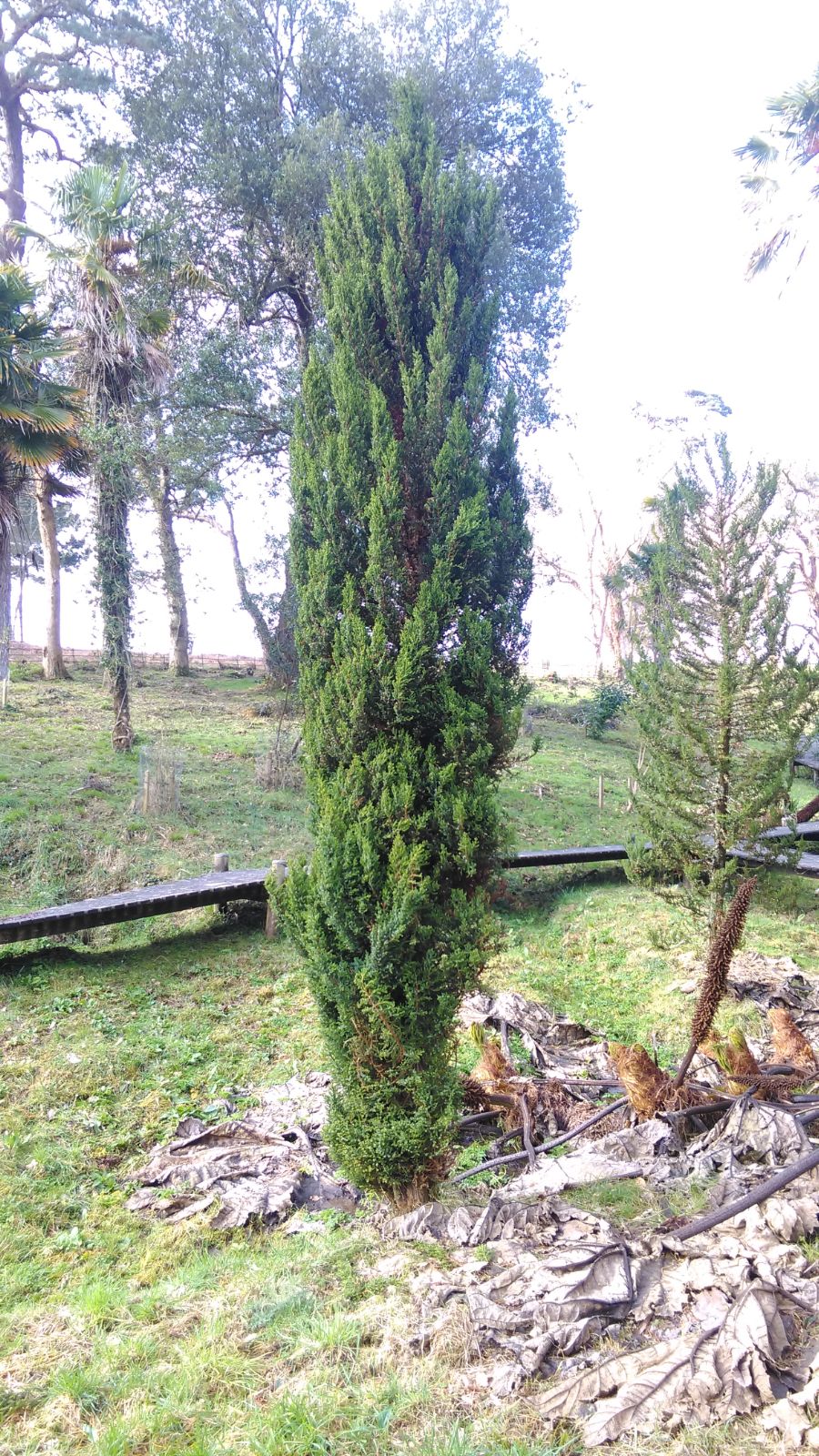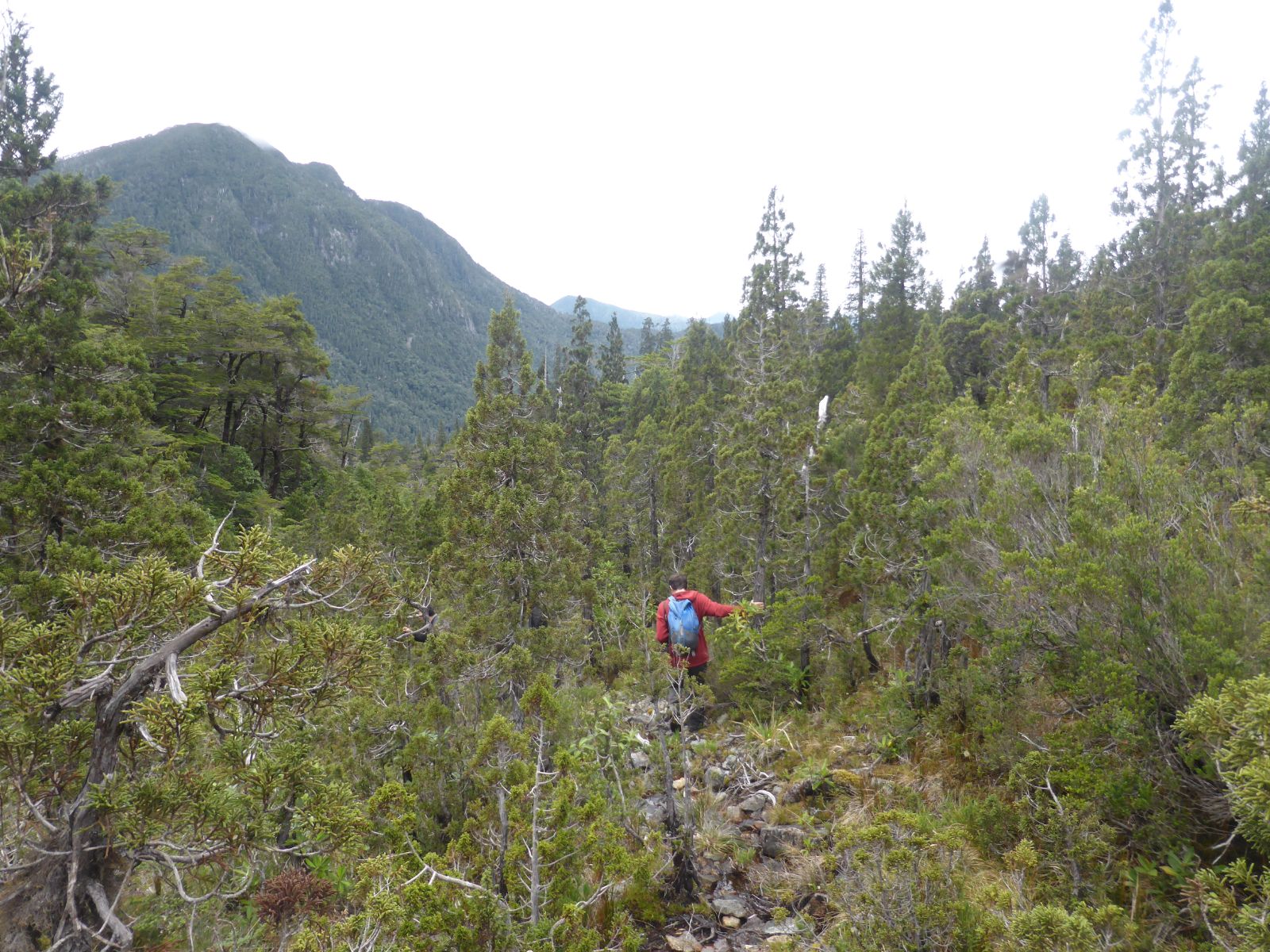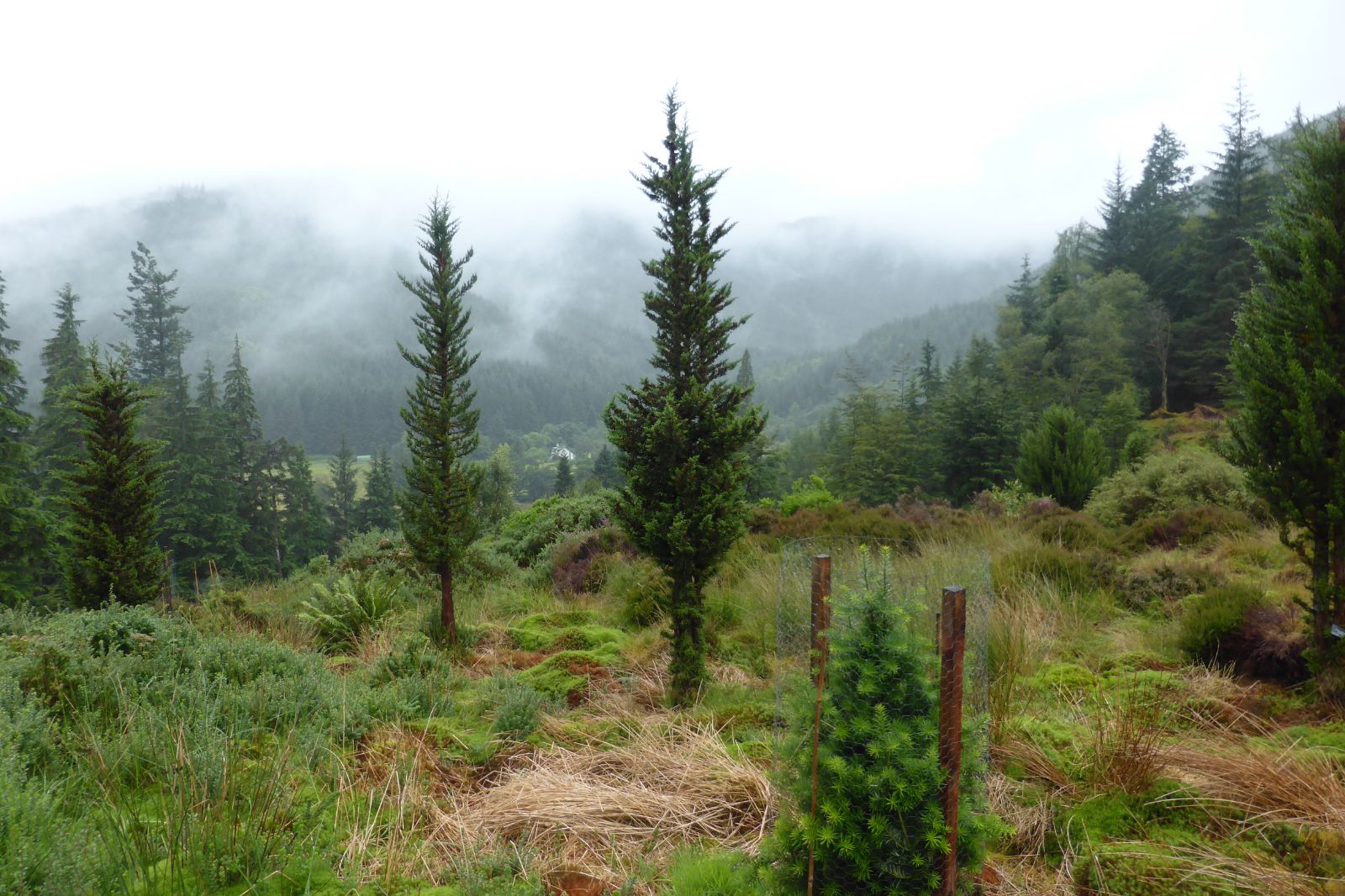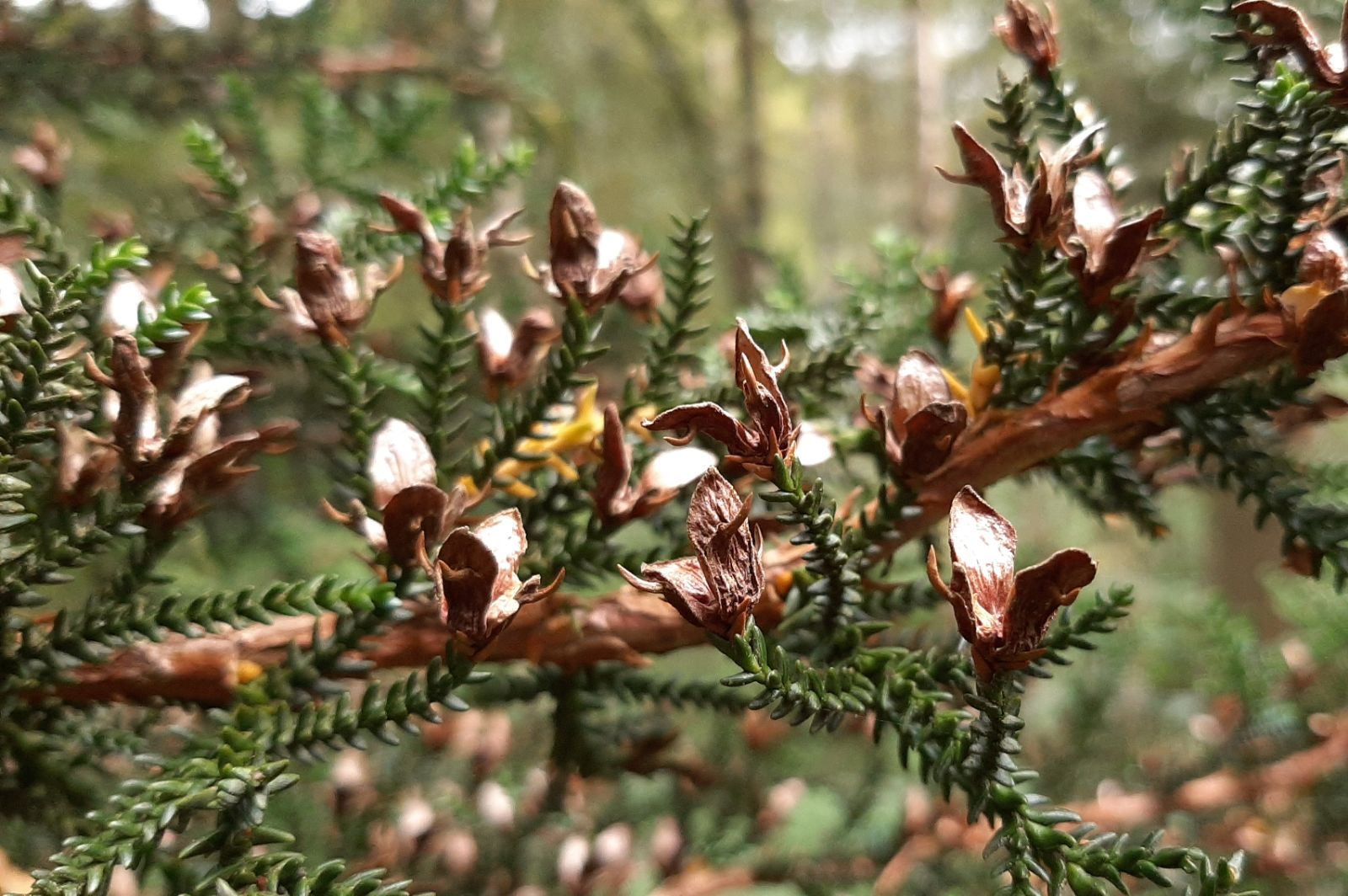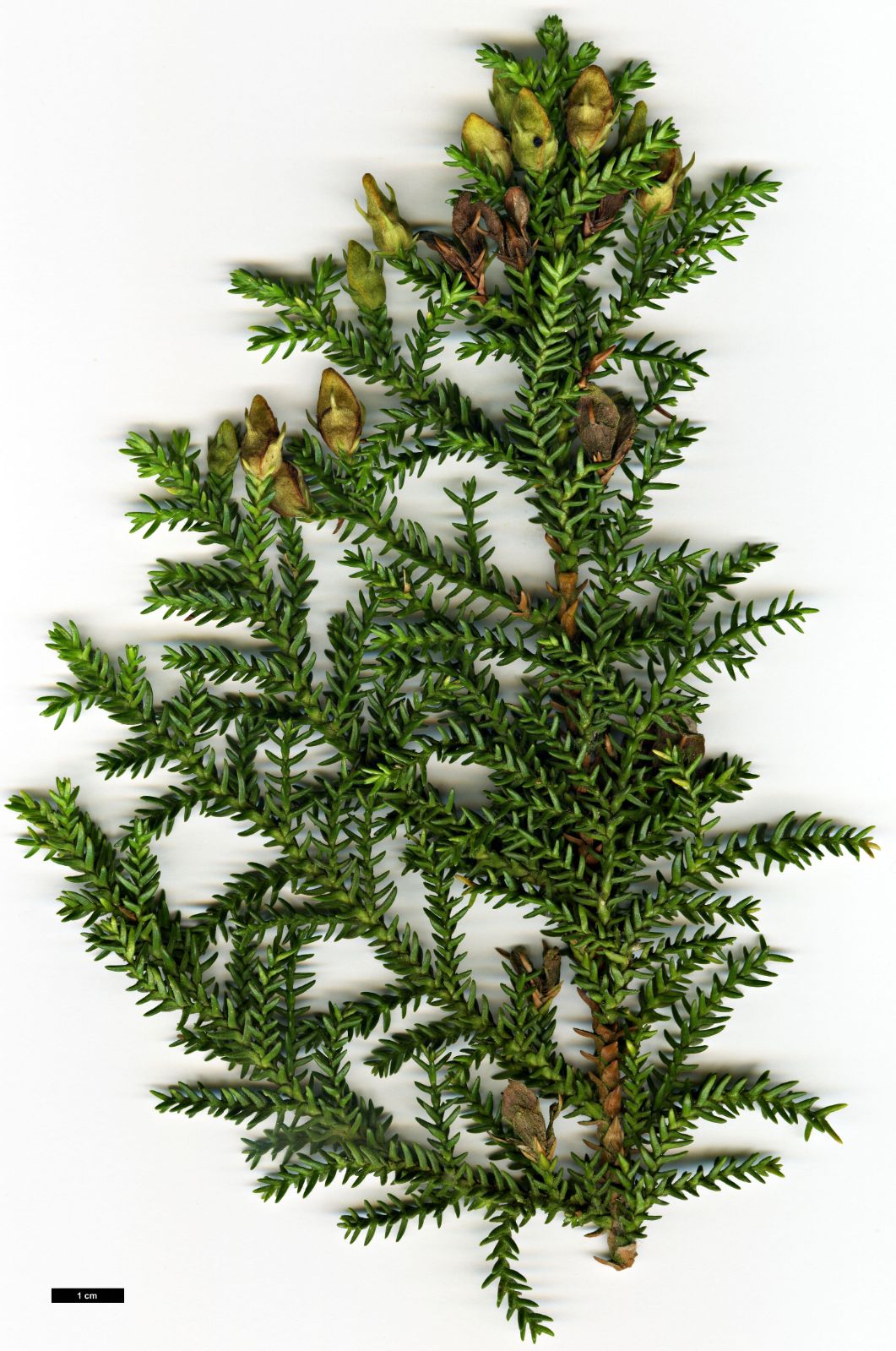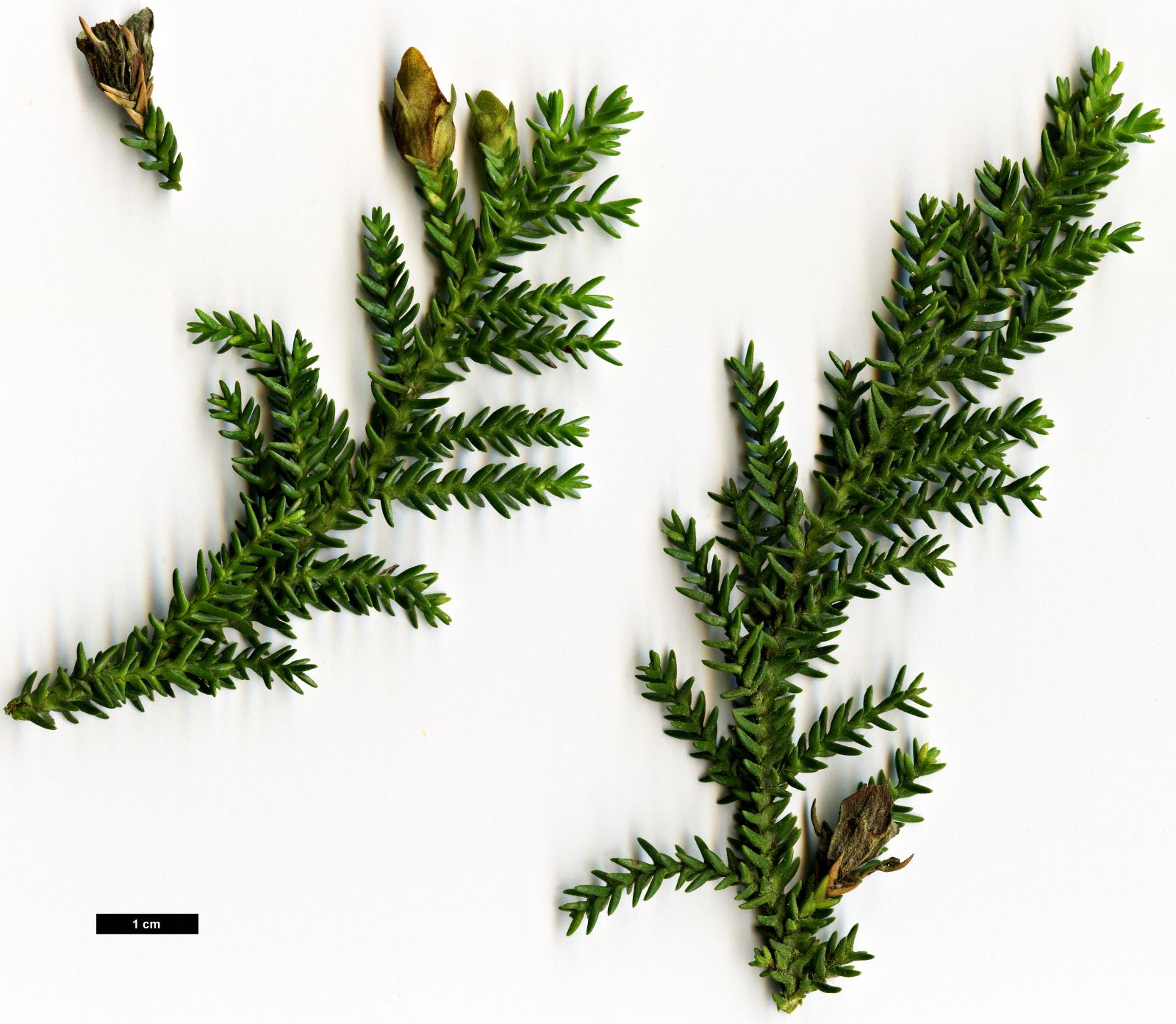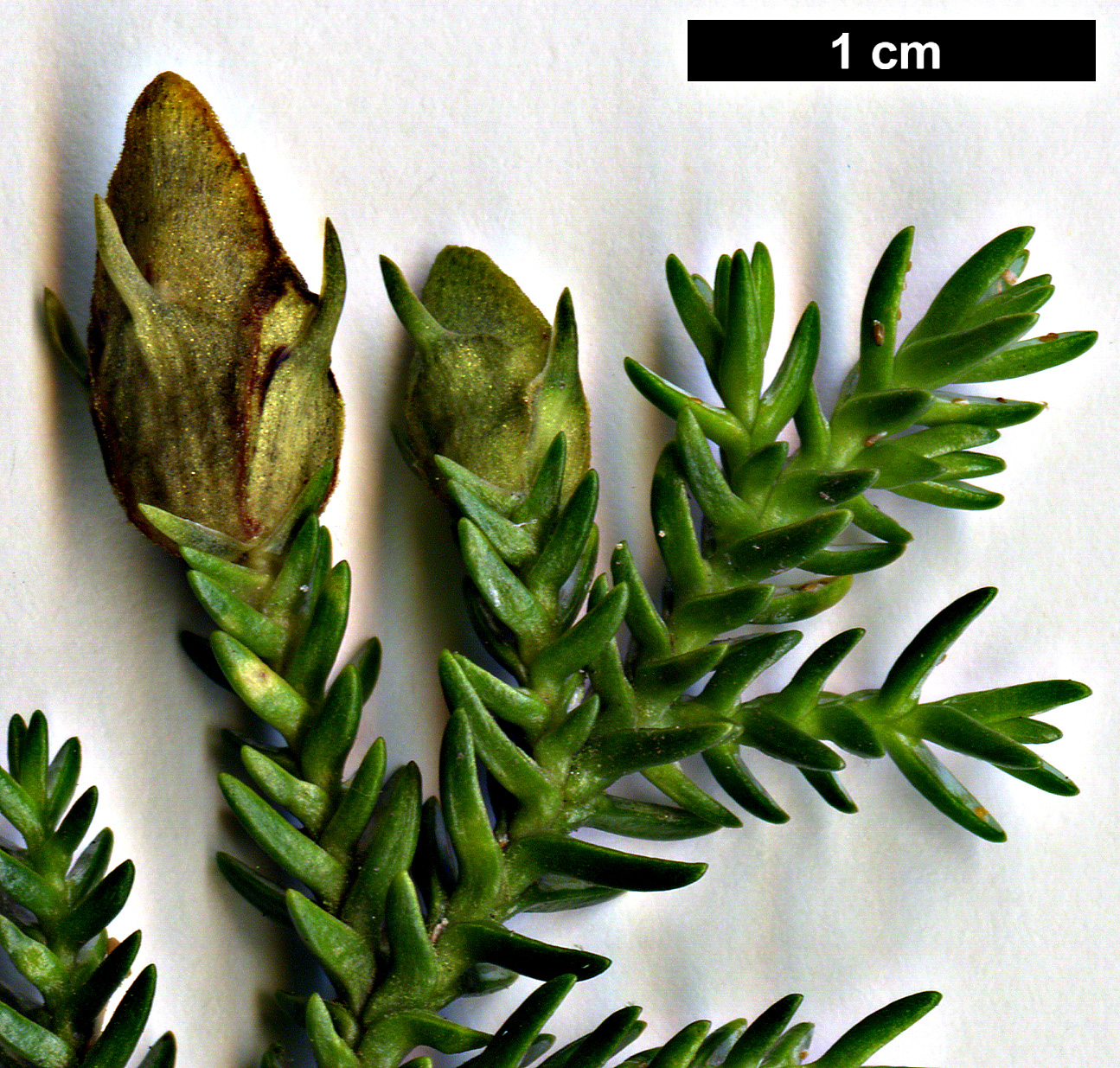Pilgerodendron uviferum
Sponsor
Kindly sponsored by
International Dendrology Society
Credits
Tom Christian (2018)
Recommended citation
Christian, T. (2018), 'Pilgerodendron uviferum' from the website Trees and Shrubs Online (treesandshrubsonline.
Genus
Common Names
- Guaitecas Cypress
- Ciprés de las Guaitecas
Synonyms
- Libocedrus uvifera (D. Don) Pilger
- Libocedrus tetragona (Hook.) Endl.
Other taxa in genus
A tree which in the wild can attain 10–20 m height and exceptionally can have a dbh of up to 1.5 m, but within harsh environments in the wild it can also be found as a low, spreading shrub. In tree form the habit is typically a dense column, the main branches being upswept to a near-parallel with the trunk. Bark of young growth is flaky, later forming longitudinal ribs separated by shallow fissures which when freshly exposed are a rich red-brown, gradually bleaching to a pale pink-grey. Branchlets initially yellow-green, then green then pale brown before maturing red-brown. Foliage is of scale-like leaves 2–3(–6) × 1(–3) mm, incurved, triangular, regularly arranged in two decussate pairs, shiny mid-dark green with scattered stomata on the adaxial side, keeled abaxially. Pollen cones 5–10 × 2–2.5 mm at maturity, solitary, terminal, yellow-green when young, maturing yellow-brown. Seed cones 8–12 × 4–6 mm at maturity, yellow-green maturing brown, valvate-ovoid with two pairs of opposite scales, terminal, solitary. Typically 3–4 seeds per cone, each with 2 wings of unequal size. (Debreczy & Rácz 2011; Premoli, Souto & Gardner 2013).
Distribution Argentina Chubut, Neuquén, Rio Negro, Santa Cruz Provinces Chile Region X (Province Valdivia) to Region XII (Province Magallanes)
Habitat Temperate rainforests, 0–1000 m asl. In the north of its range it commonly associates with Fitzroya; in the south it is a component of evergreen temperate rainforests dominated by species such as Nothofagus nitida and N. betuloides.
USDA Hardiness Zone 8-9
RHS Hardiness Rating H4
Conservation status Vulnerable (VU)
Taxonomic note There is some debate among conifer taxonomists as to whether Pilgerodendron uviferum really belongs in its own monospecific genus, or whether it should be returned to Libocedrus, a proposal for which there is some evidence (The Gymnosperm Database 2018). Nevertheless, the name P. uviferum has been established for some time and remains widely accepted by many of the world’s major botanical collections. For this reason, and the fact that it is quite readily distinguished from the extant species of Libocedrus, the use of Pilgerodendron will be maintained here for the time being.
First introduced to in Britain in 1849, Pilgerodendron uviferum remains very rare in cultivation both here and elsewhere. Seemingly only a handful of trees arising from this and other early introductions survived into the 20th century: one of the best was at Kilmacurragh in Wicklow, Ireland, which had reached 6 m by 1980, but this has since died (Tree Register 2018; S. O’Brien pers. comm. 2011).
The species owes its relative abundance in the UK and Ireland in the early 21st century to the Royal Botanic Garden Edinburgh’s International Conifer Conservation Programme (ICCP), which has repeatedly introduced material to cultivation since the early 1990s. One of the most widespread collections, Beavis 138, is in 2018 represented by over 100 plants growing in over 20 sites. Some of the best are in the sheltered gardens of southwest England, including Glendurgan where a grove of six trees average 4.5 m in height in 2018 (pers. obs.). At Tregothnan, where a similar grove was planted in 1998, the tallest has already achieved 6 m in height, equalling the old Kilmacurragh tree in just 20 years and exceeding the official UK champion (a 5 m tree at Picton Castle, Pembrokeshire) by 1 m (pers. obs.; Tree Register 2018). Probably the most remarkable planting is that at Benmore Botanic Garden in Argyll, where a group of 50 trees has been planted on a cold, exposed, wind-swept hillside in wet, shallow, peaty soils, and which is subject to annual rainfall averaging 3 m per year! All are thriving, and these and many other young trees already cone regularly (pers. obs.).
Although these plantings go some way to mimicking the natural habitat of Pilgerodendron in the abundant availability of soil moisture, experience in cultivation has shown that it will thrive on relatively dry sites too, such as at Cragside in Northumberland and at the Batsford Arboretum in Gloucestershire, and although it clearly performs best in mild gardens in southwestern Britain, it has proved cold hardy, surviving the bitterly cold winters at Dawyck Botanic Garden in the Scottish Borders and at Drumlanrig Castle in Dumfriesshire, although in neither location does it grow in overly wet conditions. It was also grown in the Faroe Islands from plants obtained from wild populations in Argentina in the late 1970s under Hørsholm 630/75, and survived there until at least 1987 (Ødum, Hansen & Rasmussen 1989). The species has recently been planted (c. 2010) at the Washington Park Arboretum, Seattle (The Arboretum Foundation 2018).
Pilgerodendron is threatened in the wild and has been listed on Appendix I of CITES since 1975 (Premoli, Souto & Gardner 2013).

